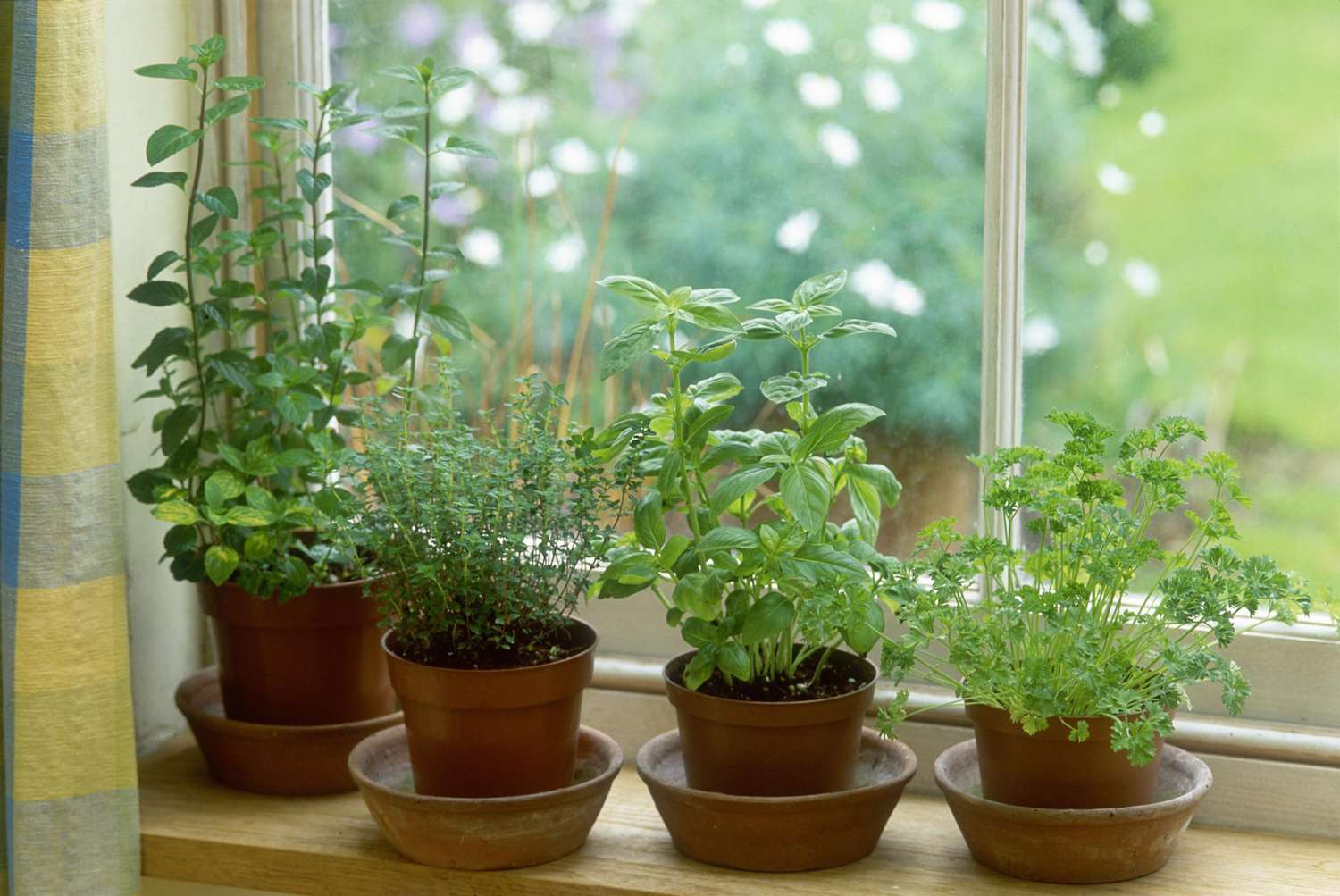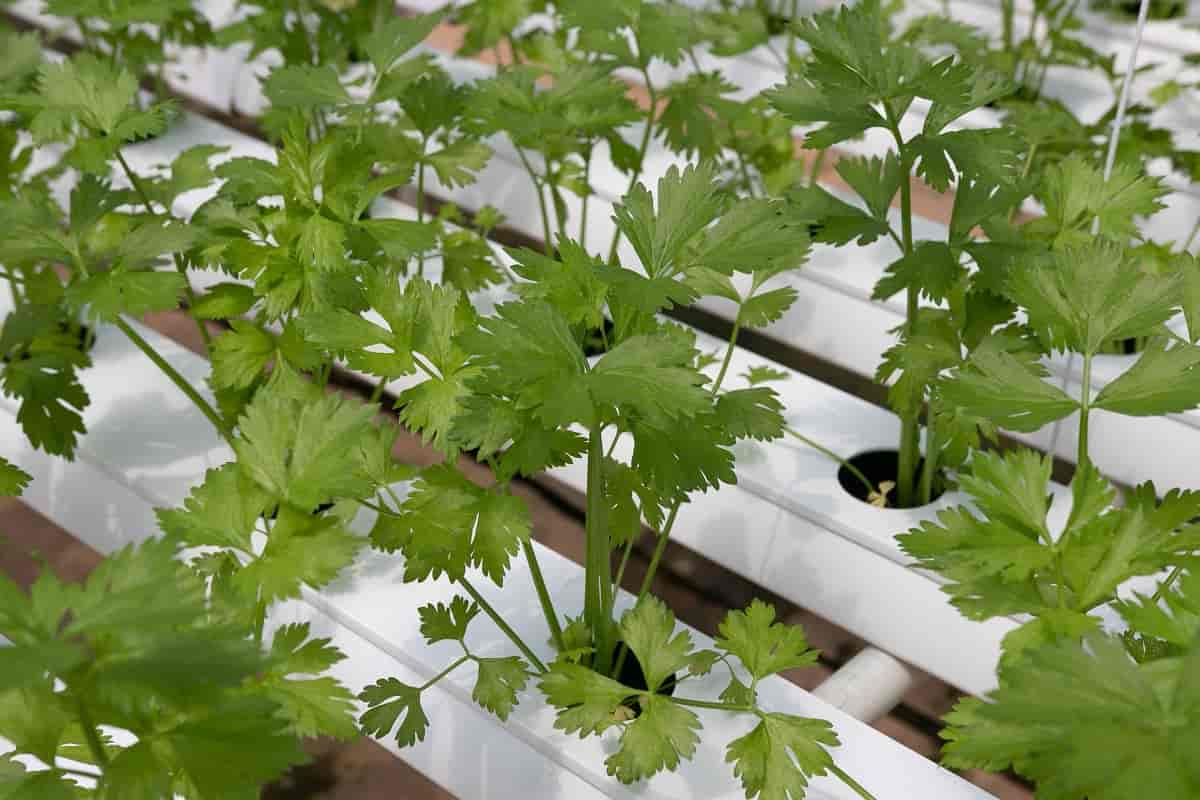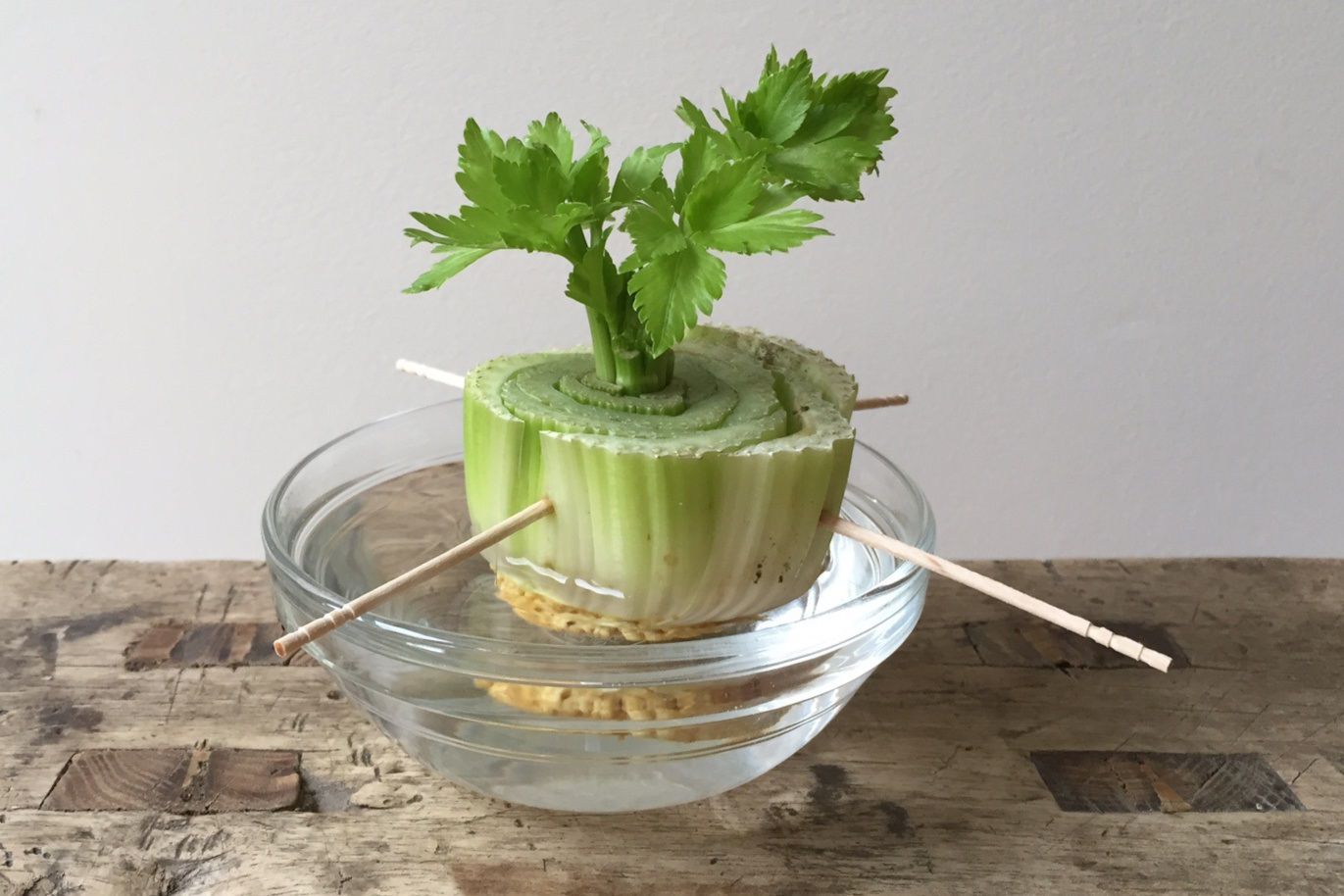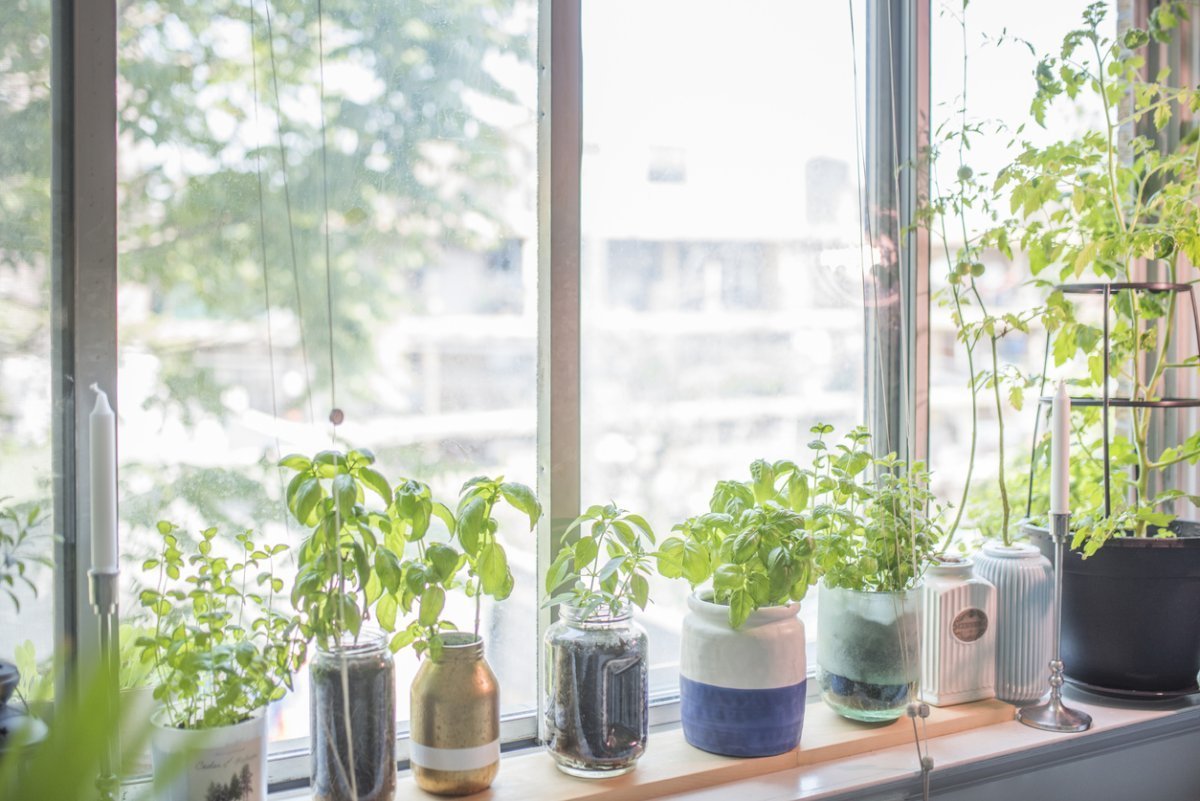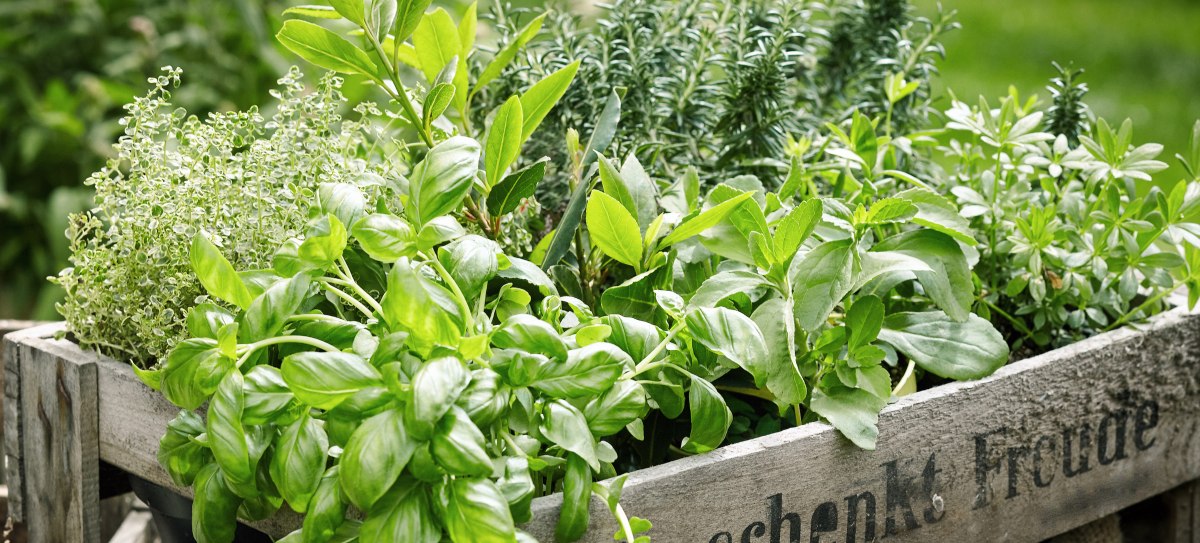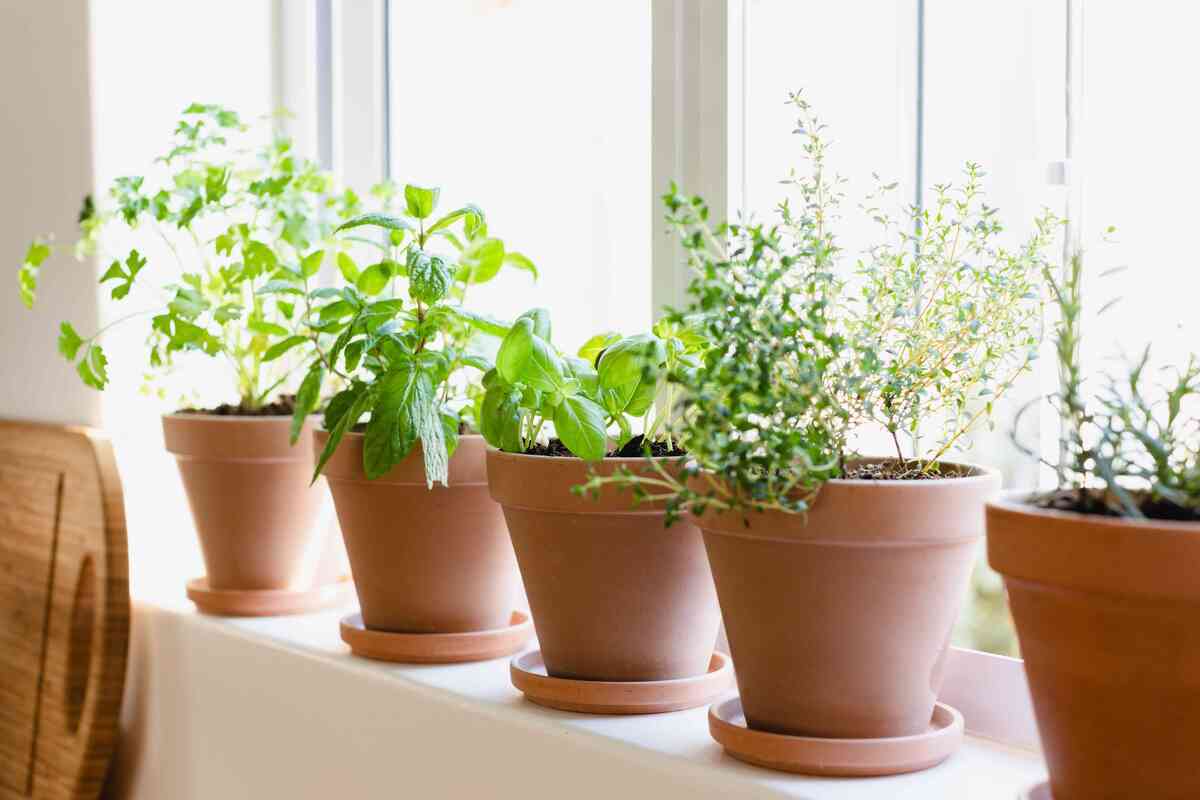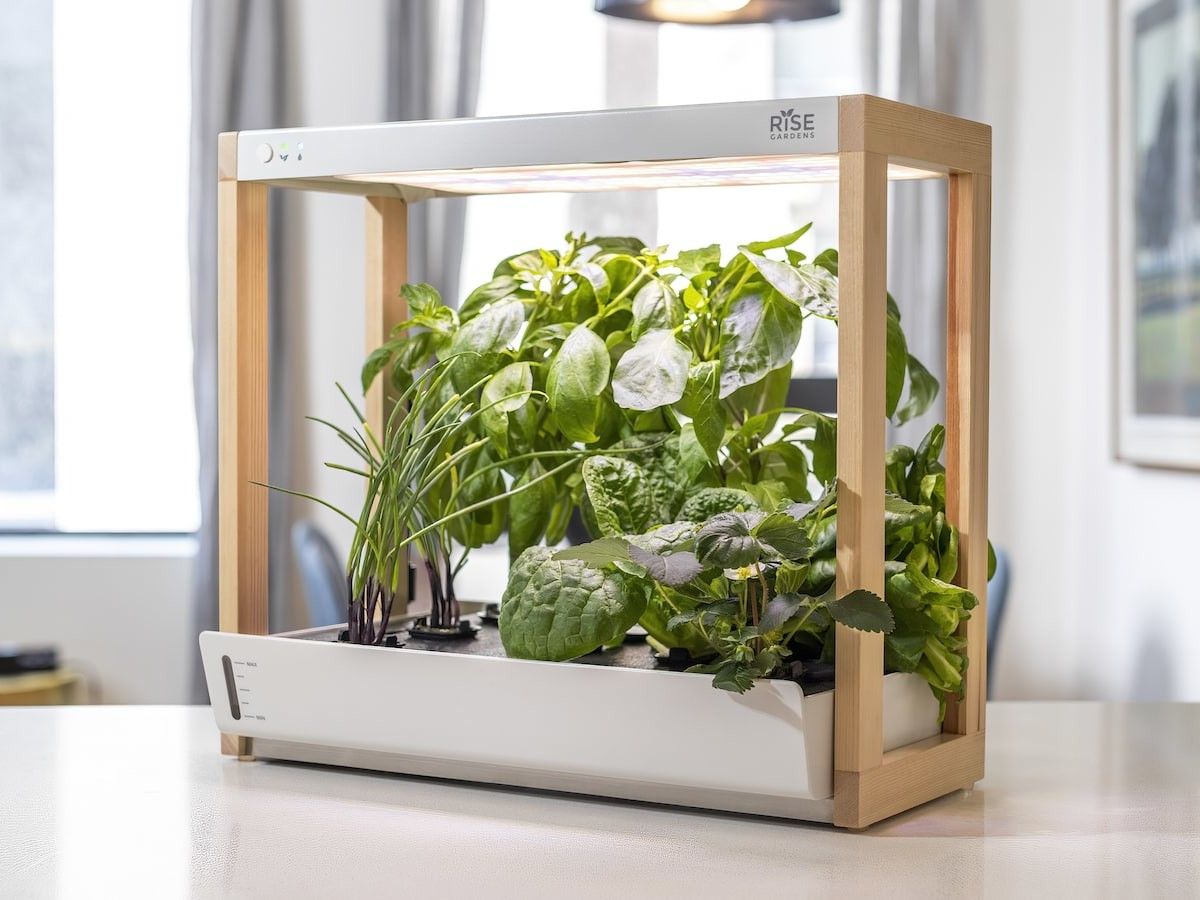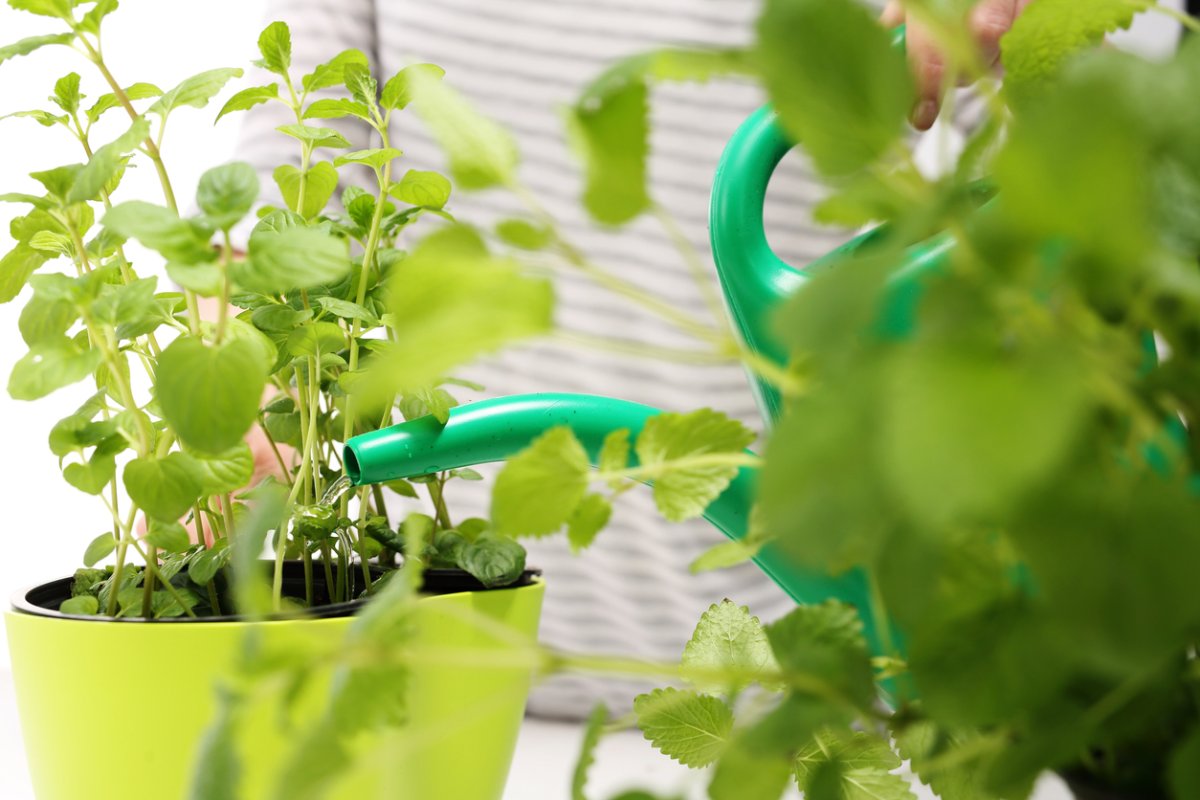Home>Types of Gardening>Edible Gardening>How To Grow Herbs Indoor
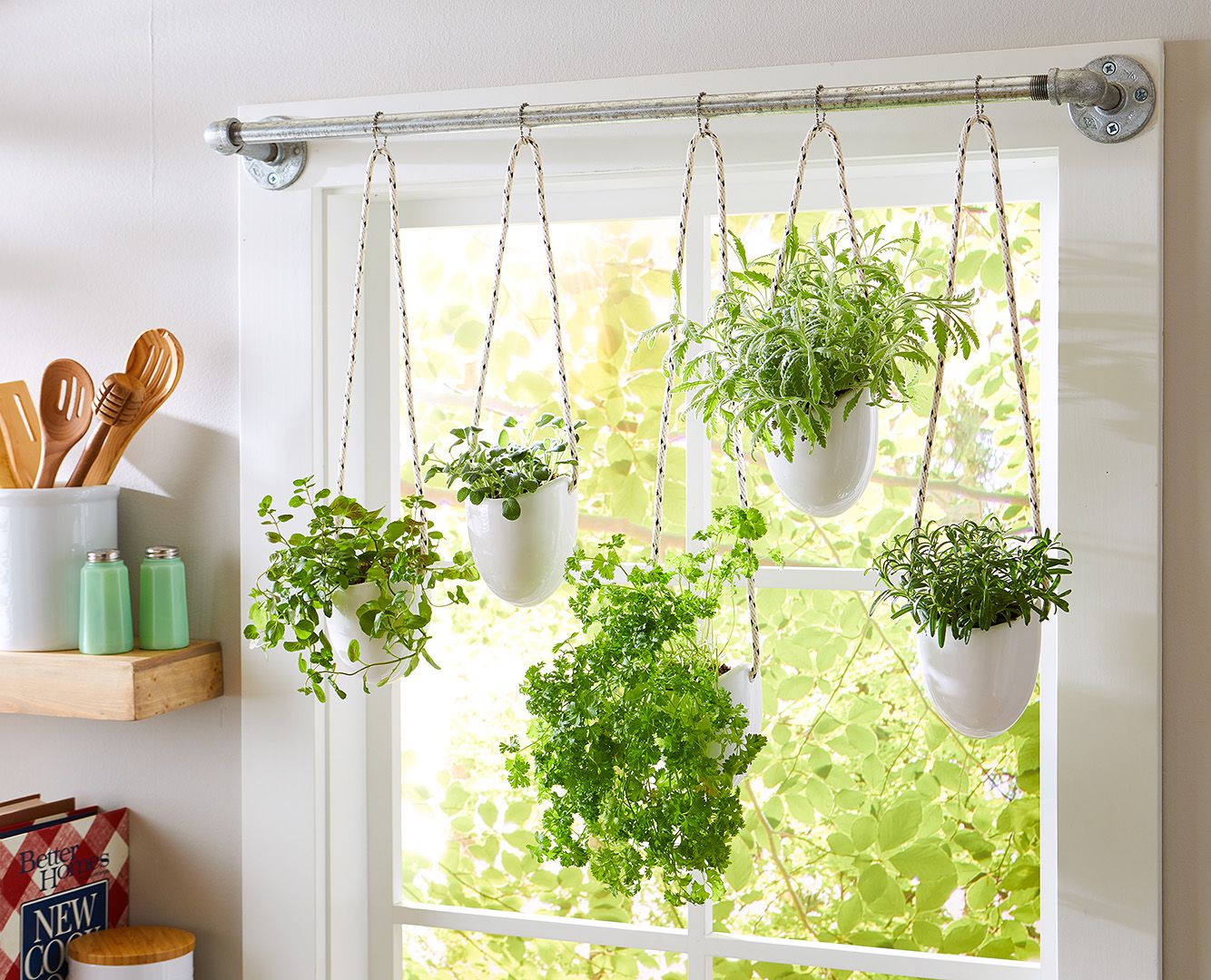

Edible Gardening
How To Grow Herbs Indoor
Modified: January 22, 2024
Learn how to grow herbs indoor with our expert tips and guidance. Discover the secrets of successful edible gardening and enjoy fresh, homegrown herbs all year round.
(Many of the links in this article redirect to a specific reviewed product. Your purchase of these products through affiliate links helps to generate commission for Chicagolandgardening.com, at no extra cost. Learn more)
Table of Contents
- Introduction
- Benefits of Growing Herbs Indoors
- Choosing the Right Herbs for Indoor Gardening
- Setting Up the Ideal Indoor Herb Garden
- Providing Adequate Lighting for Indoor Herbs
- Watering and Fertilizing Indoor Herbs
- Common Pests and Diseases in Indoor Herb Gardens
- Harvesting and Using Fresh Herbs from Your Indoor Garden
- Tips for Successful Indoor Herb Gardening
- Conclusion
Introduction
Welcome to the world of edible gardening! There’s nothing quite as satisfying as growing your own food and experiencing the joy of harvesting fresh produce. If you’re looking to embark on a gardening adventure but don’t have a spacious backyard, fear not! Indoor gardening is a fantastic option that allows you to grow a variety of herbs right in the comfort of your home.
Indoor herb gardening has gained popularity in recent years, thanks to its accessibility and numerous benefits. Not only does it provide a convenient and sustainable source of fresh herbs for your culinary endeavors, but it also adds a touch of greenery and beauty to your indoor space. Whether you have a small apartment, limited outdoor space, or simply prefer to have your herbs easily accessible in the kitchen, growing herbs indoors is an excellent solution.
In this guide, we will explore the world of indoor herb gardening and provide you with all the information you need to get started. From choosing the right herbs to creating the ideal growing conditions, we’ll walk you through each step of the process, ensuring your indoor herb garden thrives.
Before we dive in, it’s important to note that while you may not be able to grow every type of herb indoors, there are plenty of options that are well-suited to indoor cultivation. From classic staples like basil and mint to more unique herbs like rosemary and thyme, the choices are vast and varied. With a little planning and care, you’ll soon be enjoying a bountiful supply of flavorful, homegrown herbs.
So, whether you’re a seasoned gardener or new to the world of planting, get ready to experience the joys of indoor herb gardening. Let’s dig in and learn how to transform your home into a mini herb haven!
Benefits of Growing Herbs Indoors
There are numerous benefits to growing herbs indoors, making it an attractive option for both seasoned gardeners and beginners. Let’s explore some of the advantages:
- Year-round availability: One of the biggest perks of indoor herb gardening is the ability to enjoy fresh herbs all year round. Unlike outdoor gardens that are subject to seasonal changes and harsh weather conditions, indoor herb gardens can thrive in a controlled environment, ensuring a continuous supply of herbs for your cooking needs.
- Convenience: Having an indoor herb garden means having fresh herbs right at your fingertips. No more running to the grocery store only to find wilting or unavailable herbs. With an indoor garden, you can simply pluck the herbs you need, exactly when you need them, ensuring maximum flavor and freshness in your dishes.
- Improved air quality: Indoor plants, including herbs, act as natural air purifiers, helping to improve the air quality in your home. They release oxygen and absorb toxins, creating a healthier and more pleasant environment. So, not only do you get the benefits of fresh herbs, but you also breathe cleaner air!
- Aesthetics: Indoor herb gardens add a touch of beauty and greenery to your indoor space. They can be grown in various types of containers, such as decorative pots or hanging baskets, allowing you to customize the look to suit your style. Whether you have a small countertop herb garden or a dedicated shelf filled with herbs, they’ll bring a vibrant and natural element to your home decor.
- Cost-effective: Buying fresh herbs from the grocery store can quickly add up, especially if you use them regularly. By growing your own herbs indoors, you can significantly cut down on grocery expenses. Plus, you’ll have the satisfaction of knowing exactly how your herbs were grown – pesticide-free and with tender loving care.
With all these benefits, it’s no wonder why indoor herb gardening has become so popular. Whether you’re a cooking enthusiast, a nature lover, or simply looking for a rewarding hobby, growing herbs indoors is a fantastic way to enjoy the freshest flavors and reap the many advantages it brings to your home.
Choosing the Right Herbs for Indoor Gardening
When it comes to choosing herbs for your indoor garden, it’s essential to select varieties that are well-suited to growing indoors. Some herbs thrive in the controlled environment of your home, while others may struggle. Here are a few factors to consider when choosing the right herbs for indoor gardening:
- Size: Consider the mature size of the herb plants and the space you have available for your indoor garden. Compact herbs like basil, chives, and thyme are ideal choices for small spaces, while larger herbs like rosemary and sage may require more room to grow.
- Light requirements: Different herbs have varying light requirements. Some herbs, like basil and parsley, prefer full sun and require at least six hours of direct sunlight each day. On the other hand, herbs like mint and chives can tolerate lower light conditions. Assess the amount of natural light available in your home and choose herbs accordingly, or consider using artificial grow lights to supplement the lighting needs.
- Growth habit: Consider the growth habit of the herb plants when selecting. Some herbs, such as mint and lemon balm, tend to spread and can become invasive. These are better suited for container gardening to prevent them from taking over your indoor space. On the other hand, herbs with upright growth habits, like basil and rosemary, are easier to manage and maintain indoors.
- Frequency of use: Think about the herbs you use frequently in your cooking and prioritize those for your indoor garden. Having easy access to the herbs you use the most will ensure you always have fresh flavors at hand. Common culinary herbs like basil, parsley, cilantro, and thyme are excellent choices for indoor gardening.
- Your personal preferences: Finally, consider your personal preferences when choosing herbs for your indoor garden. Perhaps you have a favorite herb that you’d like to have on hand, or maybe you want to experiment with unique flavors like lemon verbena or chocolate mint. Tailor your selection to the herbs that resonate with your taste buds and culinary adventures.
By considering these factors, you can choose herbs that are well-suited to indoor gardening and increase your chances of success. Remember, there’s no hard and fast rule when it comes to herb selection, so don’t be afraid to experiment and grow a variety of herbs that you find interesting and useful.
Setting Up the Ideal Indoor Herb Garden
Creating the ideal environment for your indoor herb garden is crucial to ensure optimal growth and productivity. Here are some key steps to set up your indoor herb garden:
- Choose the right containers: Select containers that provide adequate drainage to prevent waterlogged roots. You can choose from a wide range of options, including traditional pots, hanging baskets, or even repurposed containers. Just ensure that the containers are appropriately sized for the herbs you’re growing.
- Use quality potting soil: Opt for a well-draining potting mix specifically formulated for indoor plants. Avoid using garden soil alone, as it can be too heavy and prone to compacting in containers. The potting mix should retain enough moisture while allowing excess water to drain out.
- Find the ideal location: Place your herb garden in a location that receives adequate light. Most herbs require at least 6 hours of direct sunlight or 12-16 hours of bright, indirect light per day. South-facing windowsills or areas close to windows are often the best options. If natural light is limited, consider using artificial grow lights to supplement the light requirements.
- Monitor temperature and humidity: Most herbs prefer temperatures between 60-70°F (15-21°C). However, some herbs, like basil, prefer slightly warmer temperatures. Keep the temperature consistent and avoid placing the herbs in drafty or hot spots. Maintain indoor humidity levels by using a humidifier or placing a tray with water near the herbs to keep the air moist.
- Arrange herbs strategically: Consider the growth habit and height of each herb when arranging them in your indoor garden. Place taller herbs in the back or center and shorter herbs in the front to ensure adequate light exposure for all plants. Leave sufficient space between the herbs to prevent overcrowding and promote good airflow.
- Label your herbs: It’s easy to forget which herb is which, especially when they’re all grown closely together. Use plant labels or popsicle sticks to identify each herb, ensuring you can easily distinguish them when it’s time to harvest.
- Maintain proper drainage and watering: Ensure that your containers have drainage holes to prevent waterlogging. Water your herbs when the top inch of soil feels dry to the touch. Avoid overwatering, as this can lead to root rot. Remember, it’s better to underwater than overwater your herbs.
By following these steps, you’ll be well on your way to setting up an ideal indoor herb garden. With the right containers, quality potting soil, proper lighting, and mindful care, your herbs will thrive and provide you with an abundant supply of fresh flavors right at your fingertips.
Providing Adequate Lighting for Indoor Herbs
Proper lighting is essential for the success of your indoor herb garden. Since most indoor environments don’t provide the same intensity of sunlight as outdoor gardens, it’s crucial to ensure your herbs receive adequate light to thrive. Here are some tips to provide the right lighting for your indoor herbs:
- Assess natural light availability: Start by identifying the brightest spots in your home. South-facing windows typically provide the most sunlight, followed by east and west-facing windows. Observe the hours of direct sunlight received in each location to determine if it meets the needs of your herbs.
- Rotate your herbs: If you have limited natural light, rotate your herbs every few days to ensure all sides receive equal exposure. This will prevent them from leaning towards the light and growing unevenly. It’s important to note that herbs grown in low-light conditions may not grow as vigorously, but they can still produce flavorful leaves.
- Supplement with artificial lighting: If natural light is inadequate or inconsistent, consider using artificial lighting to ensure your herbs receive sufficient light. LED (light-emitting diode) grow lights are an excellent choice for indoor herb gardens. They provide the specific spectrum of light that plants need for photosynthesis, promoting healthy growth. Position the lights a few inches above the plants, and adjust the height as the herbs grow to maintain optimal light intensity.
- Provide the right light duration: Herbs typically require 12-16 hours of light per day for optimal growth. If using artificial lights, set them on a timer to provide the necessary duration. This will mimic natural daylight cycles and ensure your herbs receive consistent light. If relying solely on natural light, adjust the positioning of the herbs to maximize light exposure throughout the day.
- Watch for light stress: While light is essential, too much intense light can damage your herbs. If you notice signs of light stress such as wilting, yellowing, or burnt leaves, move your herbs to a location with slightly lower light intensity. On the other hand, if your herbs appear leggy or have pale leaves, it may be a sign that they’re not receiving enough light and require more exposure.
- Consider reflective surfaces: Maximize light absorption by placing reflective surfaces, such as aluminum foil or whiteboards, behind or around your herbs. This will help bounce light back onto the plants, ensuring they receive as much light as possible.
By providing adequate lighting for your indoor herbs, whether through natural light or artificial lighting, you’ll enable their photosynthesis process and achieve healthy growth. Remember to regularly monitor your herbs’ light requirements and make adjustments as needed to maintain their well-being.
Watering and Fertilizing Indoor Herbs
Proper watering and fertilization are crucial for the health and vitality of your indoor herbs. Finding the right balance will ensure that your herbs thrive and produce flavorful leaves. Here are some important tips for watering and fertilizing your indoor herb garden:
- Watering: The key to successful watering is providing enough moisture without overwatering. Check the moisture level of the soil by inserting your finger about an inch deep. If it feels dry, it’s time to water. Use room temperature water and drench the soil until it drains out of the bottom of the pot. Allow the soil to dry slightly between waterings to prevent root rot.
- Drainage: Good drainage is essential to prevent waterlogged roots. Ensure that your herb containers have drainage holes and use well-draining potting soil. If excess water accumulates in the saucer or tray beneath the pot, empty it to avoid water sitting stagnant.
- Fertilizing: Indoor herbs benefit from regular feeding to ensure they receive essential nutrients. Use a balanced water-soluble fertilizer with an N-P-K ratio (nitrogen, phosphorus, potassium) of around 10-10-10 or a specialized herb fertilizer. Follow the instructions on the fertilizer packaging for the correct dilution rate. Apply the fertilizer every two to four weeks during the growing season, reducing frequency during winter when herbs are not actively growing.
- Organic alternatives: If you prefer organic options, consider using compost or organic fertilizers like fish emulsion or seaweed extract. These natural fertilizers provide a gentle and slow-release source of nutrients to support healthy herb growth.
- Observe herb responses: Pay attention to how your herbs respond to watering and fertilization. Yellowing or drooping leaves may indicate overwatering or nutrient deficiencies, while stunted growth or pale leaves may be a sign of under-fertilization. Adjust your watering and fertilization practices accordingly to address these issues.
- Pest prevention: Overwatering can create moist conditions that attract pests like fungus gnats. To prevent these pests, allow the soil to dry out a bit between waterings. Additionally, regularly inspect your herbs for any signs of pests like aphids or spider mites and take appropriate measures to control them, such as using organic insecticidal soap or Neem oil.
Remember, every herb is unique, and their watering and fertilization needs may vary slightly. Observe your herbs closely and develop a watering and fertilization routine that suits their individual requirements. With the right care, your indoor herbs will flourish, providing you with a constant supply of fresh and flavorful leaves.
Common Pests and Diseases in Indoor Herb Gardens
While indoor herb gardens are generally less prone to pests and diseases compared to outdoor gardens, they can still face some common issues. Being aware of these pests and diseases will allow you to take proactive measures to prevent and manage them effectively. Here are some common pests and diseases that can affect your indoor herb garden:
- Aphids: These small, soft-bodied insects can cluster on the undersides of leaves, sucking sap and causing distorted growth. To control aphids, you can manually remove them with a strong spray of water or use insecticidal soap.
- Fungus gnats: These tiny black flies are attracted to moist soil and can be a nuisance in indoor herb gardens. They lay their eggs in the soil, and the larvae feed on organic matter, potentially damaging roots. To prevent fungus gnats, allow the soil to dry out between waterings and avoid overwatering. Sticky traps can also be used to catch the adult flies.
- Powdery mildew: This fungal disease appears as a white, powdery coating on the leaves, stems, and flowers of herbs. It thrives in humid conditions and can cause stunted growth. To prevent powdery mildew, ensure proper air circulation and avoid overcrowding plants. If it occurs, remove affected plant parts and treat with a fungicidal spray specifically formulated for powdery mildew.
- Root rot: Overwatering and poor drainage can lead to root rot, a fungal infection that causes roots to become mushy, brown, and eventually die. To prevent root rot, make sure your herb containers have drainage holes and allow the soil to dry out slightly between waterings. If root rot occurs, repot the affected herb using fresh, well-draining soil.
- Spider mites: These tiny pests can create fine webbing on the leaves and cause yellowing or speckled discoloration. Spider mites thrive in dry conditions. Increase humidity around your herbs by misting the leaves regularly and use insecticidal soap or neem oil to control them.
- Potato beetles: These pests are more commonly found in outdoor gardens, but they can occasionally make their way indoors. They feed on leaves and can quickly defoliate your herbs. Handpick the beetles and larvae or use organic insecticides if needed.
- Herb viruses: While less common, some herbs may be susceptible to viral infections that can cause mottled or distorted leaves. Unfortunately, there are no cures for viral infections. If a herb shows signs of a viral infection, it’s best to remove and dispose of the affected plant to prevent it from spreading to other herbs.
Regularly inspect your herbs for any signs of pests or diseases. Early detection and swift action can help prevent the problem from spreading and minimize damage. Maintaining a healthy growing environment, proper watering practices, and good hygiene can go a long way in preventing pest and disease infestations in your indoor herb garden.
Harvesting and Using Fresh Herbs from Your Indoor Garden
Harvesting fresh herbs from your indoor garden is a rewarding experience that allows you to enjoy their vibrant flavors and aromas in your culinary creations. Here’s a guide to help you harvest and make the most of your homegrown herbs:
- Timing: Harvest herbs when they reach their peak freshness and flavor. Generally, it’s best to wait until the plants are well-established and have developed enough foliage before harvesting. Avoid harvesting more than one-third of the plant at a time to ensure continued growth and vitality.
- Method: Use clean, sharp scissors or pruning shears to harvest your herbs. Cut just above a set of healthy leaves or nodes to encourage new growth. Avoid tearing or bruising the leaves as it can lead to discoloration and faster spoilage.
- Harvesting leaves: For herbs like basil, mint, and cilantro, harvest individual leaves or remove entire stems from the base of the plant. Pinch off the leaves of herbs such as thyme, rosemary, and oregano along the stem in the opposite direction of growth, as this can stimulate bushier growth.
- Harvesting flowers: Some herbs, like chamomile and lavender, are prized for their flowers. Harvest the flowers just as they begin to open for optimal flavor and fragrance. Remove the entire flower stem from the plant and gently remove any leaves or buds attached to it.
- Storage: Freshly harvested herbs can be used immediately, but if you have an abundance, you can store them for later use. Rinse the herbs gently to remove any dirt or insects, then pat them dry with paper towels. Wrap the herbs loosely in a damp paper towel and place them in a perforated plastic bag or an airtight container. Store them in the refrigerator, and they should stay fresh for up to a week.
- Using fresh herbs: Fresh herbs add incredible flavor and fragrance to a wide range of dishes. Add them to salads, dressings, soups, stews, marinades, stir-fries, and homemade sauces. Experiment with different combinations to enhance the taste of your favorite recipes. Remember that fresh herbs are more delicate than dried herbs, so it’s best to add them towards the end of the cooking process to preserve their flavors.
- Drying or freezing: If you have an abundance of herbs, you can also preserve them for long-term use. Dry the herbs by hanging them upside down in a cool, well-ventilated area. Once completely dry, crumble the leaves and store them in airtight containers. Alternatively, you can freeze the herbs by chopping them finely and placing them in ice cube trays filled with water or olive oil. Once frozen, transfer the herb cubes to freezer bags for easy use in your favorite recipes.
Harvesting fresh herbs from your indoor garden allows you to savor the incredible flavors and aromas that they bring to your culinary creations. Enjoy the satisfaction of using homegrown herbs and explore the endless possibilities for adding fresh herbal goodness to your meals!
Tips for Successful Indoor Herb Gardening
Growing herbs indoors can be a fulfilling and rewarding experience. To ensure the success of your indoor herb garden, here are some essential tips to keep in mind:
- Start with healthy plants: Begin with healthy herb plants from reputable sources or grow them from seeds. Healthy plants have a better chance of thriving indoors and resisting pests and diseases.
- Choose the right container size: Select containers that are proportionate to the size of your herbs. Remember that herbs vary in their growth habits, so choose containers that allow enough space for their roots to grow.
- Use high-quality potting soil: Invest in a well-draining potting mix specifically formulated for indoor plants. Good quality soil ensures proper water retention and nutrient availability for your herbs.
- Provide adequate drainage: Ensure that your herb containers have drainage holes to prevent waterlogging. Excess water can lead to root rot and other moisture-related issues.
- Monitor light intensity: Herbs require sufficient light for healthy growth. Observe the natural light available in your home and supplement with artificial grow lights if needed. Adjust the lighting setup as your herbs grow to maintain the optimum light intensity.
- Water mindfully: Avoid overwatering your herbs by allowing the soil to dry out slightly between waterings. Check the moisture level by testing the top inch of soil with your finger. Remember, it’s better to underwater than overwater your herbs.
- Fertilize regularly: Provide your herbs with the necessary nutrients by fertilizing them every two to four weeks during the growing season. Choose a balanced water-soluble fertilizer or organic alternatives, following the package instructions for dilution rates.
- Prune and trim regularly: Regular pruning helps to promote bushier growth and prevent legginess. Trim off any yellowing or damaged leaves to maintain the overall health of your herbs.
- Control pests naturally: Prevent and manage common pests like aphids and spider mites by using natural remedies such as insecticidal soap, neem oil, or introducing beneficial insects like ladybugs.
- Observe and rotate: Regularly observe your herbs for any signs of pests, diseases, or nutrient deficiencies. Rotate the positioning of your herbs to ensure equal light exposure on all sides and prevent leaning or uneven growth.
- Experiment and have fun: Indoor herb gardening provides the perfect opportunity to explore new plant varieties and experiment with different flavors in your culinary creations. Enjoy the process of growing, harvesting, and using your homegrown herbs!
By implementing these tips, you’ll create an ideal environment for your indoor herb garden, ensuring healthy growth and a bountiful supply of flavorful herbs. Embrace the joys of indoor gardening and reap the rewards of having fresh, aromatic herbs right at your fingertips!
Conclusion
Indoor herb gardening offers a wonderful opportunity to cultivate fresh flavors and enhance your culinary endeavors right in the comfort of your own home. With the right knowledge and care, you can create an indoor herb garden that not only provides a continuous supply of aromatic herbs but also adds beauty and vitality to your living space.
Choosing the right herbs for indoor gardening, setting up the ideal growing conditions, and providing adequate lighting, watering, and fertilization are key factors in ensuring the success of your indoor herb garden. By understanding common pests and diseases, you can take preventive measures to keep your herbs healthy and thriving.
As you harvest your fresh herbs and incorporate them into your meals, you’ll experience the remarkable flavors and fragrances that only homegrown herbs can offer. From basil for your homemade pesto to mint for refreshing mojitos, the possibilities are endless.
Remember to experiment, have fun, and embrace the learning process. Indoor herb gardening allows you to connect with nature and enjoy the benefits of nurturing and growing your own food. So, whether you’re a seasoned gardener or new to the world of planting, dive into the world of indoor herb gardening and elevate your culinary creations with the vibrant flavors of homegrown herbs.
